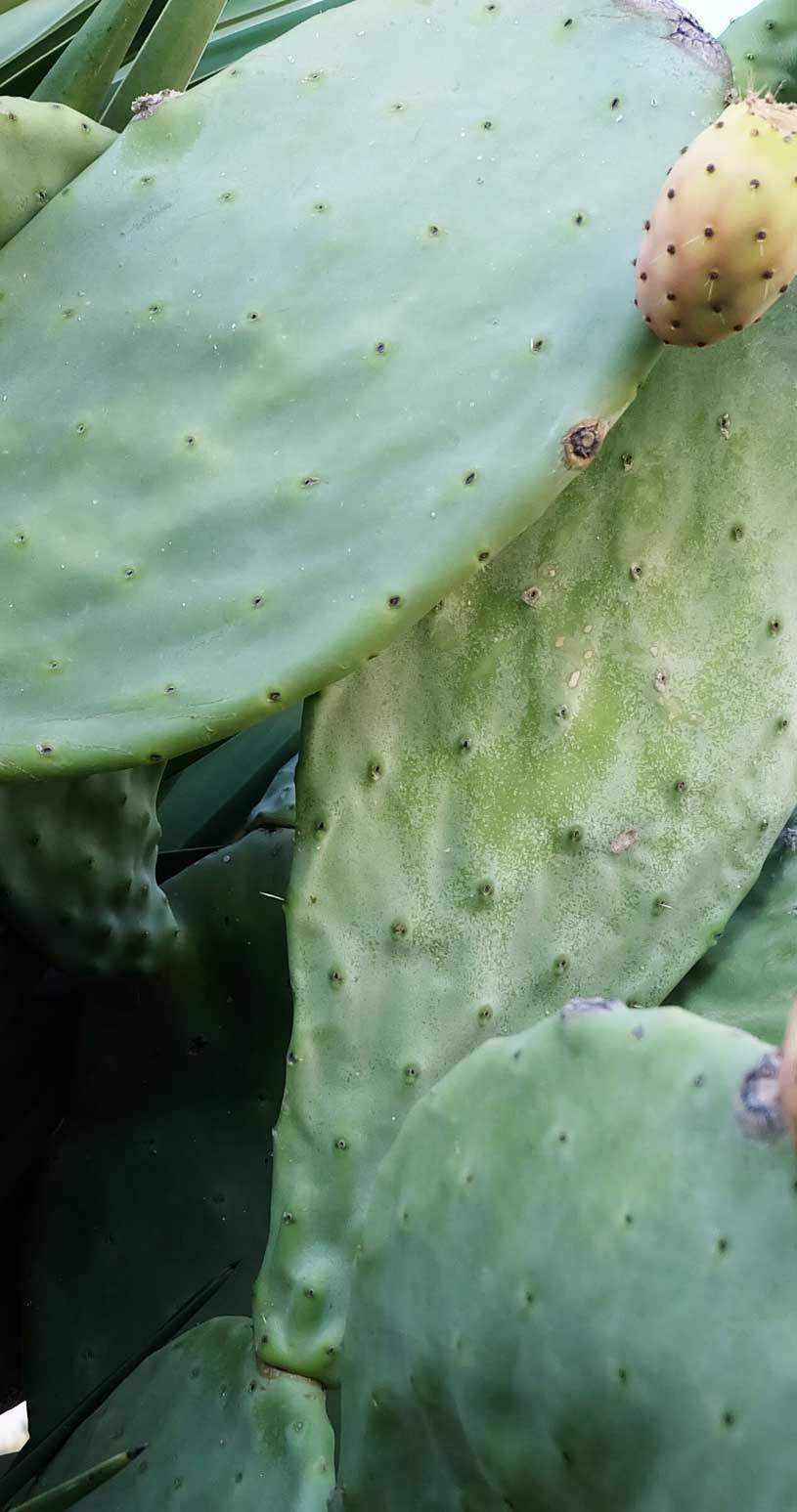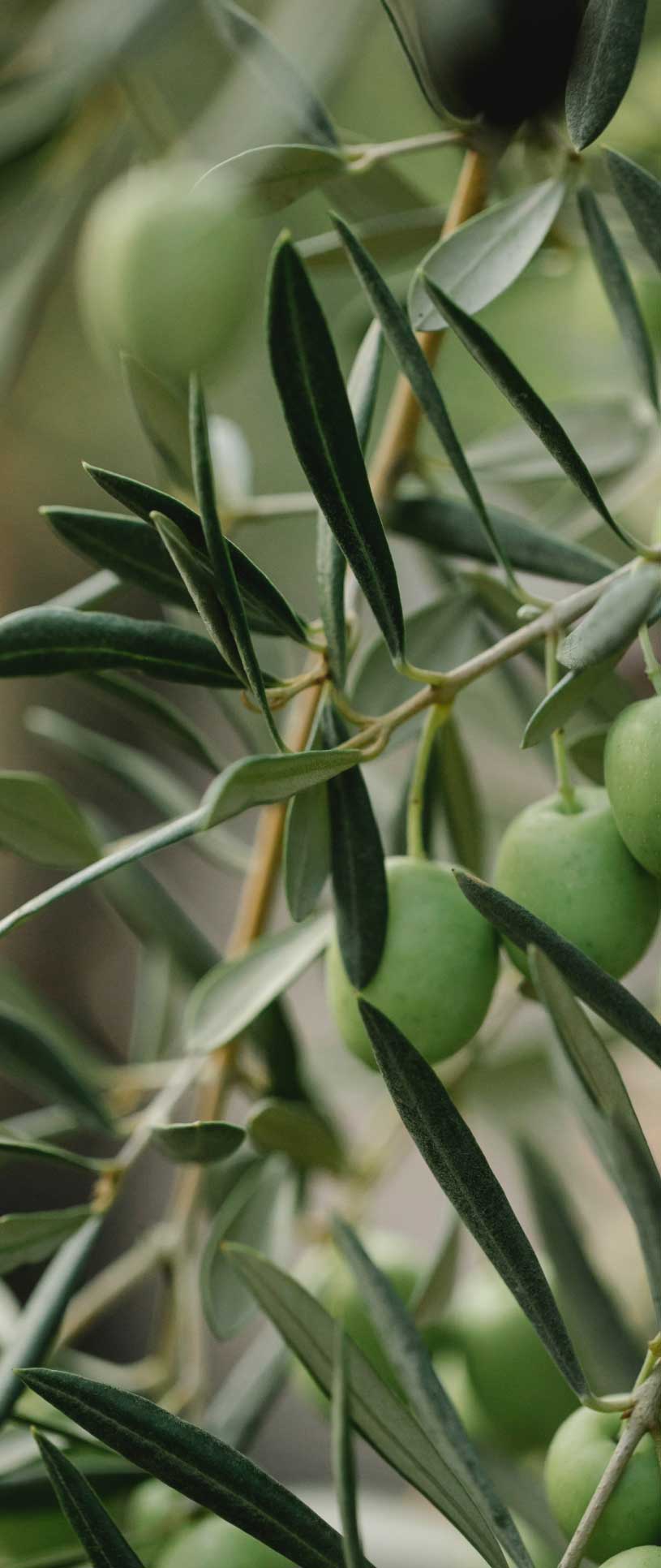
THE UNIQUE BLEND TO SUPPORT HEALTHY MUCOSAE AND IMPROVES DIGESTIVE FUNCTION
Why choose mucosave™ fg
mucosave™ fg is a blend of two herbal extracts containing polysaccharides of prickly pear cladodes juice (Opuntia ficus-indica L.) and biophenols of olive leaves (Olea europaea L.).
mucosave™ fg is an innovative and natural ingredient for digestive health: thanks to the soothing activity and gel-forming matrix property of Opuntia polysaccharides and a lenitive effect from olive biophenols has multi-benefit potential.
SUGGESTED DOSAGE 400 MG/DAY

health benefits
The opuntia cladodes
Characteristics, plant life cycle and seasonality
Opuntia ficus-indica (L.) Mill., belonging to the Cactaceae family, is a perennial succulent plant with an average height of 1-2 meters, which can also reach 4-5. Originally from Mexico, from which it takes its name due to the “Indian” presence of America, it thrives today in the warmer regions of Italy, such as Sicily, Sardinia and Calabria. In fact, it adapts better to dry and arid climates and soils and its cultivation does not need any particular attention. It has swollen, fleshy and flat leaves, called cladodes but commonly known as “pale” in Italy, with variable dimensions, up to 50 cm in width and length.
The olive leaves
Characteristics, plant life cycle and seasonality
The olive tree is an evergreen species and its leaves have distinctive characteristics that make them easily recognizable. In particular, they are about 7.5 cm long, narrow, opposite, lanceolate, or linear, with entire margins and acute tips. While the upper surface is silvery green, glabrous, or covered with scattered hairs, the underside is lighter. The olive tree’s vegetative cycle strongly depends on the typical climatic conditions of its growing area. In Italy, during winter months, from November to January, the olive tree goes into a period of rest and it begins its vegetative resumption between March and April with the appearance of light green leaves, shoots, and the swelling of axillary buds. As the temperatures rise and the days get longer, the tree starts developing its inflorescences, a phase known as “mignolatura”. In May-June the olive tree’s flowers bloom: the typical white flowers can be seen among the leaves. By mid-June the “allegagione” (fruit-setting) phase starts and the flower corolla withers and falls off, marking the end of the flowering phase. At this point, the transformation of the flowers into fruit begins. Between July and August, the olive fruit begins to swell until it reaches normal size and is ripe and ready for harvesting in September-October.


About the opuntia cladodes
Uses, traditions and folk medicine
The prickly pear cladodes are a characteristic element of this succulent plant, scientifically known as Opuntia. They have always been considered a natural remedy thanks to the multiple health benefits provided by the high content of water, fibers, and mineral salts. Indeed, cladodes were already used by the indigenous in Mexico as decongestants and anti-inflammatories. Many years after, Sicilian people understood their healing properties: raw, whole, baked, or in pulp, cladodes were the right solution to treat bruises, inflammations, and even malaria fever. Nowadays, prickly pear cladodes are not only used as fodder for livestock but also included in different culinary recipes, fried or raw.
About the olive leaves
Uses, traditions and folk medicine
The olive (Olea europaea L.) is an emblematic species that represents one of the most important fruit trees in the Mediterranean area. Its leaves have been part of the culinary tradition since ancient times and are still used today in some recipes. They typically undergo preservation methods, like salting or drying, before being utilized to wrap and enhance the flavors of foods such as cheese, rice, or meat.
In addition to its culinary role, olive trees and their leaves have carried significant symbolic meanings in Mediterranean cultures, signifying peace, prosperity, and longevity. In ancient times, these leaves were woven into crowns and presented to victorious athletes during the Greek Olympic Games.
Moreover, Olive tree leaves have been widely used as a traditional herbal remedy for their potential health benefits. Indeed, they were used as antirheumatic, anti-inflammatory, antipyretic, vasodilatory, hypotensive, diuretic, and hypoglycemic agents. These effects are related to the high content of active compounds such as monounsaturated fatty acids, sterols, and several fundamental antioxidants such as phenols and flavonoids.
